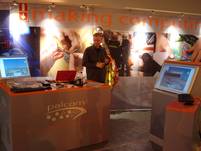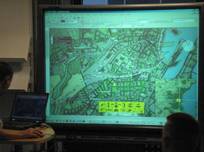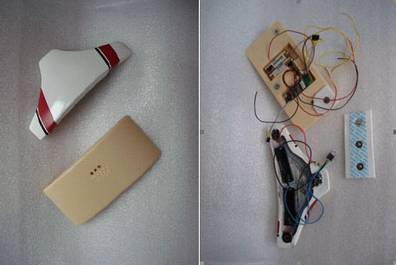Major Incidents pump life into palpability
The PalCom team examines palpability in collaboration with a team of professionals acting in Major Incidents. Their procedure is based on designing and experimenting with prototypes. Their goal is to develop palpable tools that can support the participating professionals in their everyday work.
For the researchers, this means materials in PalComís line of operations
For the Major Incidents team, it means tools for use in the line of fire.
The prototypes developed to support Major Incidents are
- An overview application


- Wireless biomonitors

An overview application
The overview application supports the challenge to get an overview of the incident by the means of collaborative technologies. The idea is to support the response managers on site or others in need of overview facilities depending on the role of the user.
Today, management leaders physically stay together to coordinate the incident response. They have different tasks and divisions of work in close collaborative situations.
In the future they could be supported by e.g. electronic map information with different interactive overlays.

The professionals really like the idea of the overview prototype that provides them with a 3D interactive world. It is a great tool to support collaboration and to share information because it is hard to share information by voice alone.
They can actually point at a road with their finger and indicate, for example: I want the vehicles to approach here!
Wireless biomonitors
The wireless biomonitor is placed on the injured person. Today, the professionals use a device called life pack 12 containing a defi brillator and sensors for measuring ECG signal, blood pressure, oxygen saturation and pulse. The measured data is transferred via wired electrodes on the injured personís body. Therefore, you have to place a professional next to the patient to watch the data displayed on the box.
If there are many patients, this is a problem.
The injured persons need hospital treatment fast. Nevertheless, they are often on site for a period of time, whilst waiting for transport.
The biomonitor supports the medical response in several ways.
- First, by giving those who carry out medical response work on site access to measured data, independent of location.
- Secondly, by transferring the injured personís data to the emergency room at the hospital to prepare for treatment.
- Thirdly, by delivering information to the AMC (Acute Medical Coordination) so that they can coordinate the emergency response in relation to the hospital and watch the injured personís data in order to support doctors and ambulance staff on site.

The Major Incidents elements trigger PalCom challenges
The prototypes are excellent tools for examining the PalCom challenges. By adding Major to incidents, the prototypes support the researchersí examination of palpability even more.
- They are developed to support professionalsí work both on-site and off-site, e.g. at the hospital.
- They do not use wires.
- And they are in large numbers.
Contact details
Margit Kristensen
Dept. of Computer Science University of Aarhus
Aabogade 34
DK-8200 Aarhus N, DENMARK
Phone: +45 8942 9303
margit(at)daimi.au.dk
Morten Kyng, dr.scient.
Professor
Dept. of Computer Science University of Aarhus
Aabogade 34 B, DK - 8200 Aarhus N
Phone: +45 8942 5715
mkyng(at)daimi.au.dk
